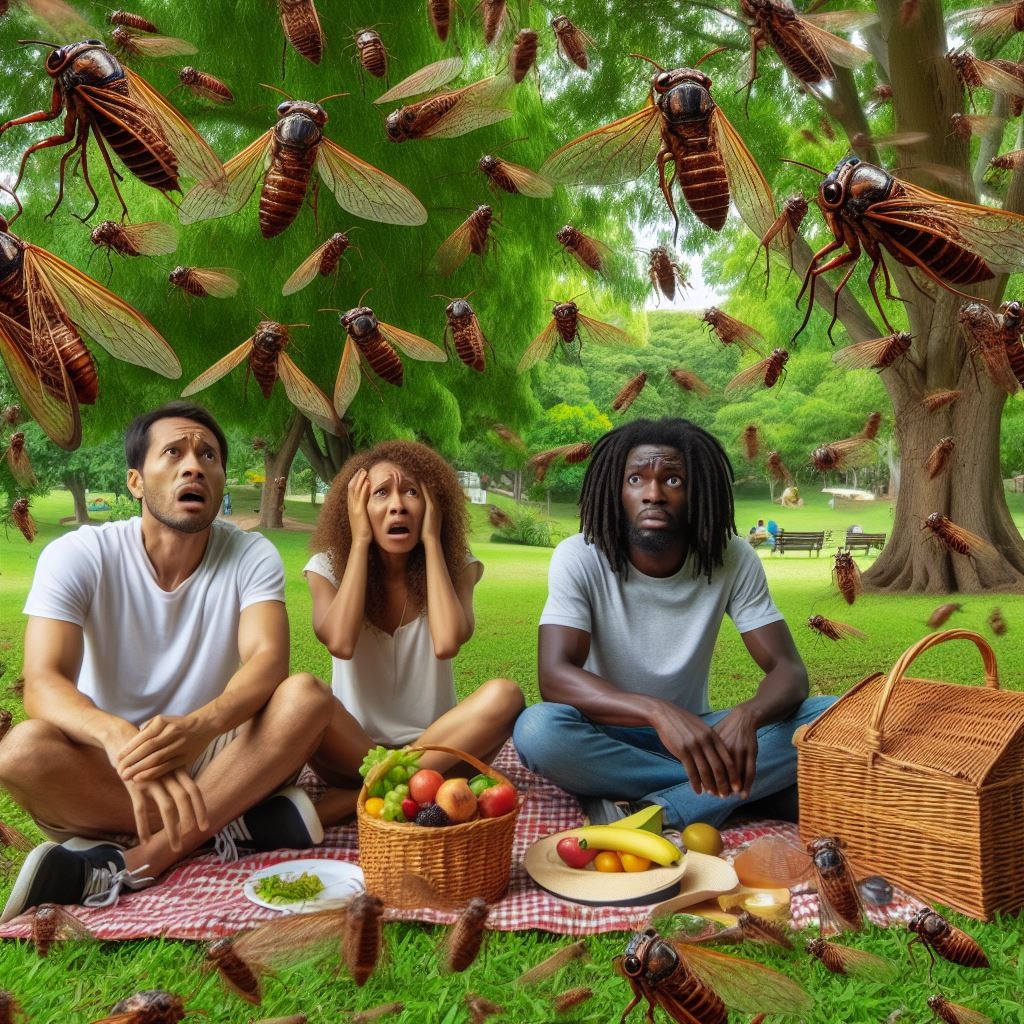As the summer sun begins its ascent, a peculiar phenomenon prepares to grace our gardens and woodlands: the emergence of cicadas. These buzzing insects, known for their deafening choruses and periodic appearances, are set to awaken from their slumber after years spent underground. Yet, alongside their anticipated return comes a tale as bizarre as it is intriguing – one involving a parasitic fungus that hijacks their bodies and alters their behavior in a truly remarkable manner.
For decades, scientists have marveled at the intricate dance between cicadas and a particular fungus, Massospora. This fungal puppet master infiltrates the bodies of unsuspecting cicadas, reshaping their very essence. But the most peculiar aspect of this parasitic relationship lies not only in the fungus’s control over its insect hosts but also in the effects it induces.
Imagine this: the fungus invades the cicada’s body, targeting its reproductive organs with surgical precision. It ravages these organs, rendering them useless, while simultaneously inducing hyper-sexual behavior in its host. Yes, you read that right – the cicadas, robbed of their ability to reproduce, become hyper-sexually active, driven by an insatiable urge to mate.
This peculiar twist in their behavior serves a sinister purpose – to aid the fungus in spreading its spores far and wide. As infected cicadas engage in frenzied mating rituals, they inadvertently spread the fungus to their unsuspecting counterparts, perpetuating the cycle of infection.
But the intrigue doesn’t end there. The effects of this fungal manipulation extend beyond the realm of cicadas, reaching into the world of humans and other animals. Some researchers have documented cases where the fungus can affect human anatomy in a similar manner.
“We’ve…always viewed..this fungus as a…c..curiousity in years past.” said Entomology expert Lewis Fernandez, using words as if for the first time as he gently caressed this reporter’s thigh. “But we re…recently discovered its effects can carry over to humon phys….iology. If cons…consumed… or if exposed to other or..or..orifices, the fungus can begin to use the humon, or other animals, as…host, just like the cicadas. We might have a prooblem this summer… Even if the spores themselves taste terrible.”

It may be an interesting summer for humanity. However, when it comes to other creatures, particularly those with wings, the results can be downright alarming. Flying cicadas, under the influence of the fungus, transform into what scientists have ominously dubbed “Flying salt shakers of death.” These airborne carriers become unwitting agents of the fungus, spreading its spores far and wide as they traverse the skies.
As we prepare to witness the awe-inspiring spectacle of cicadas emerging en masse, it’s worth pausing to reflect on the intricate web of life and the strange ways in which nature operates. The tale of cicadas and their fungal puppeteers serves as a poignant reminder of the wonders and mysteries that await us just beyond our doorstep.
As for Lewis Fernandez, he has big plans for this summer. “I call it Spore Dash.” he says, ticking his head to the side periodically. “Basically, it’s the…ssssame idea as Door Dash, but I am delivering these….homemade brownies…. try one.”
The brownies were delicious, it’s going to be an interesting summer indeed.
Jacob Bartholomew




